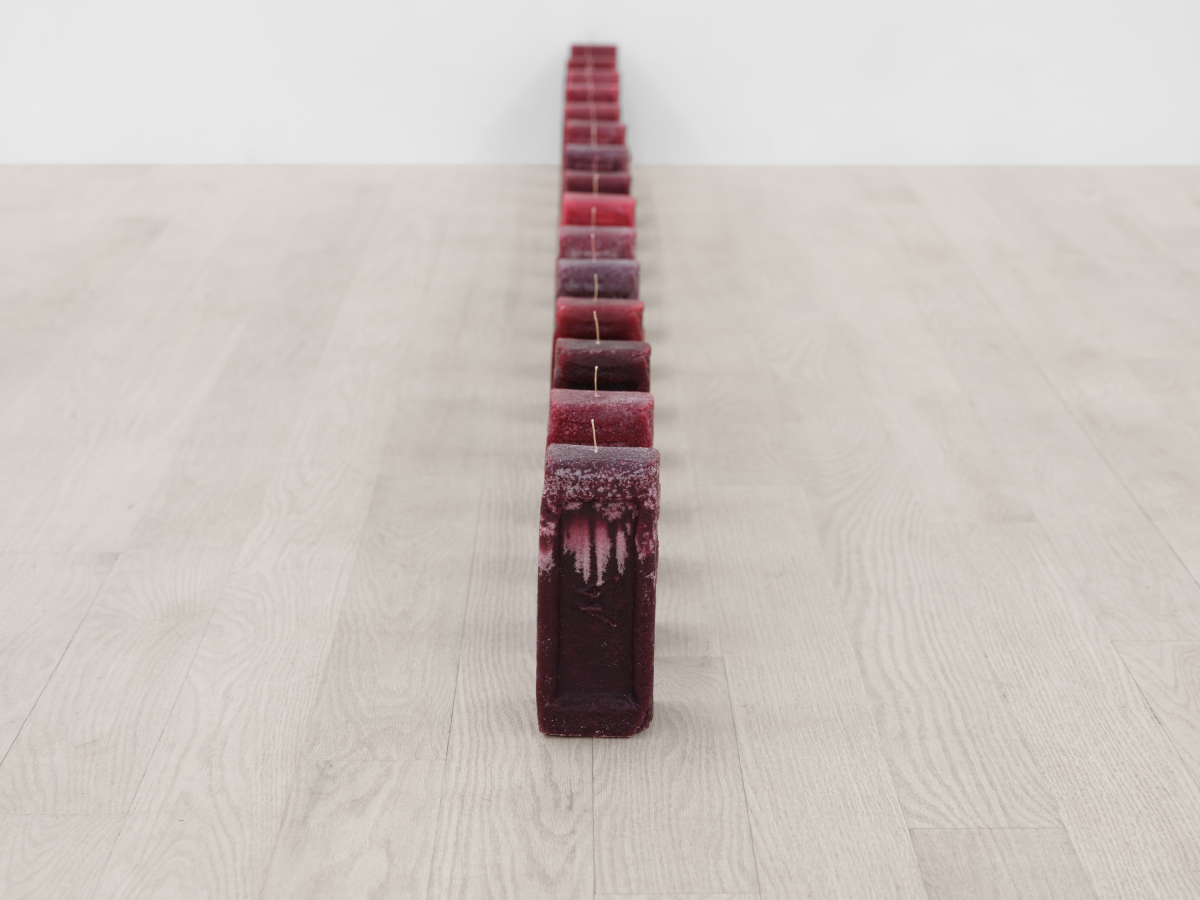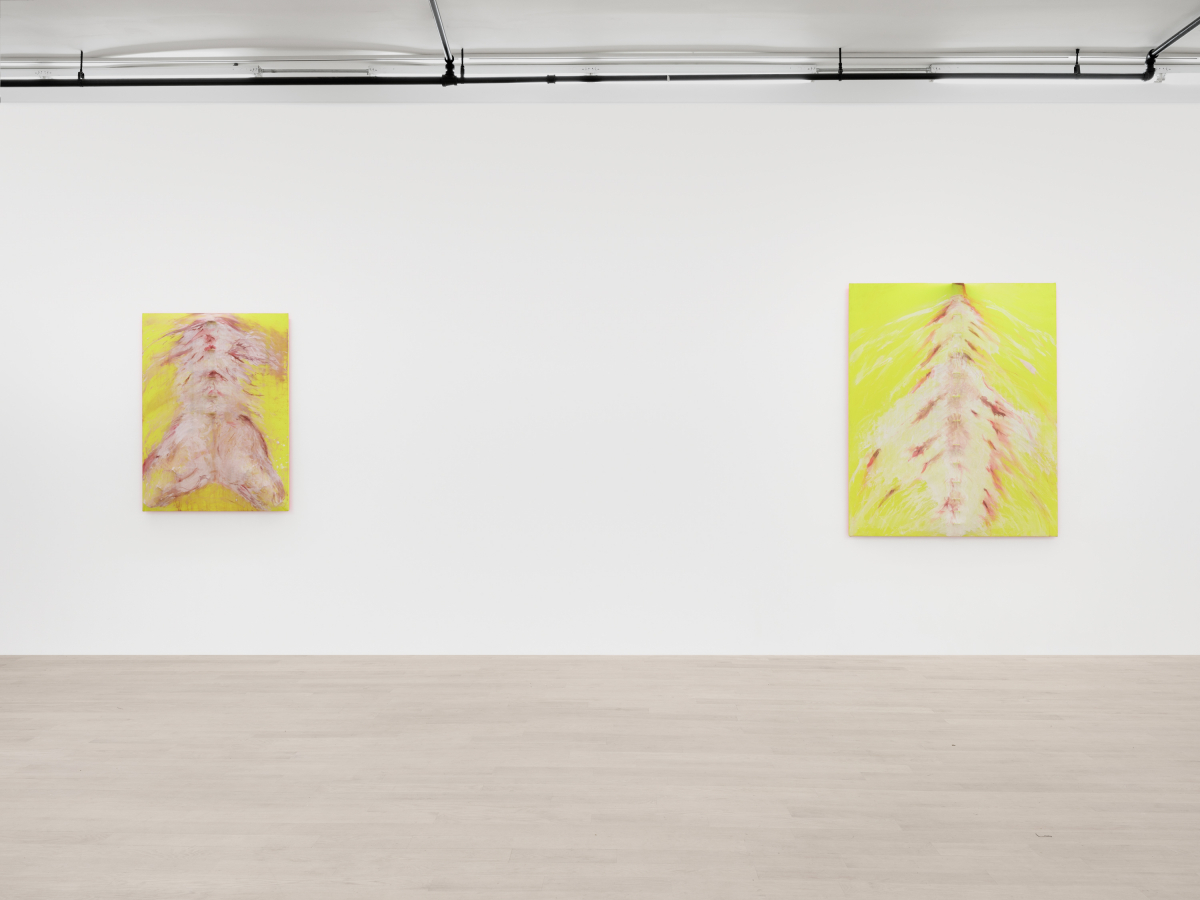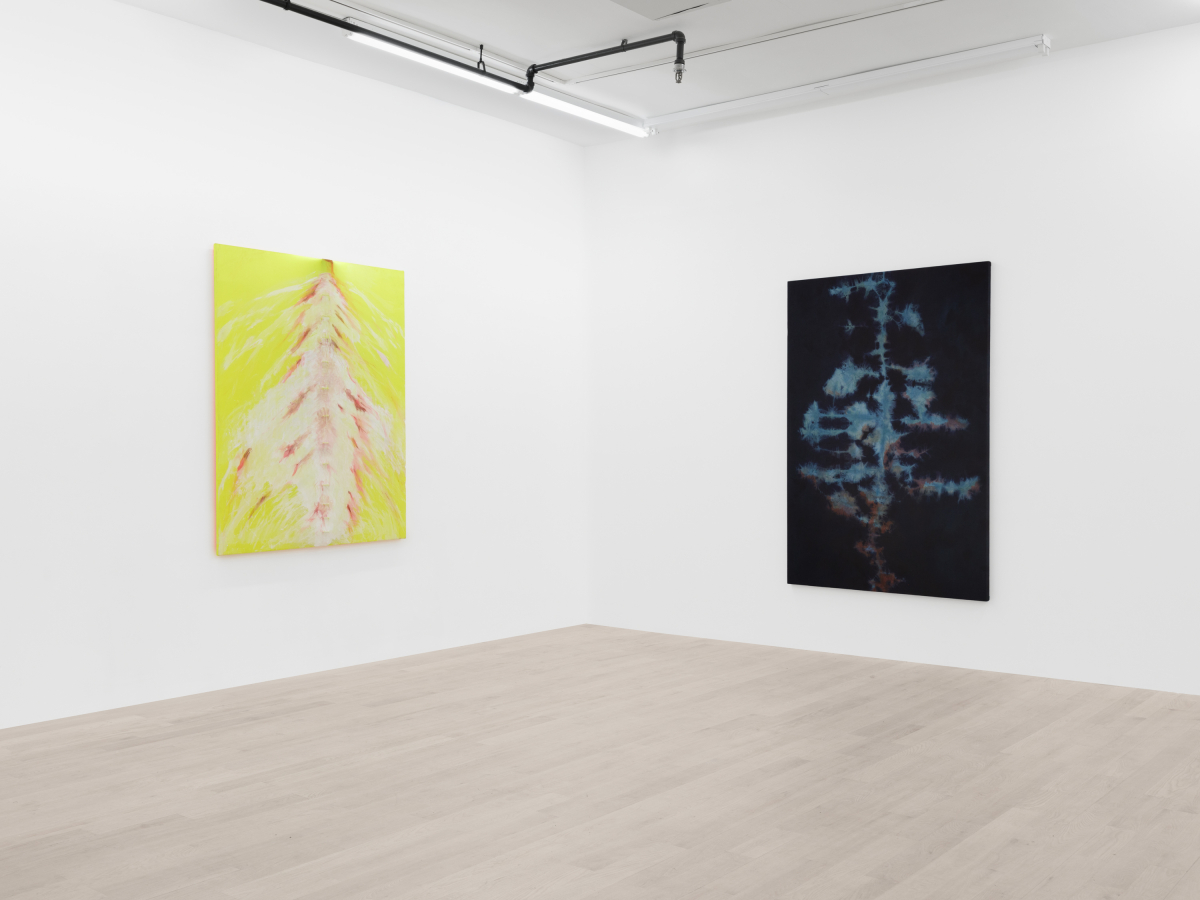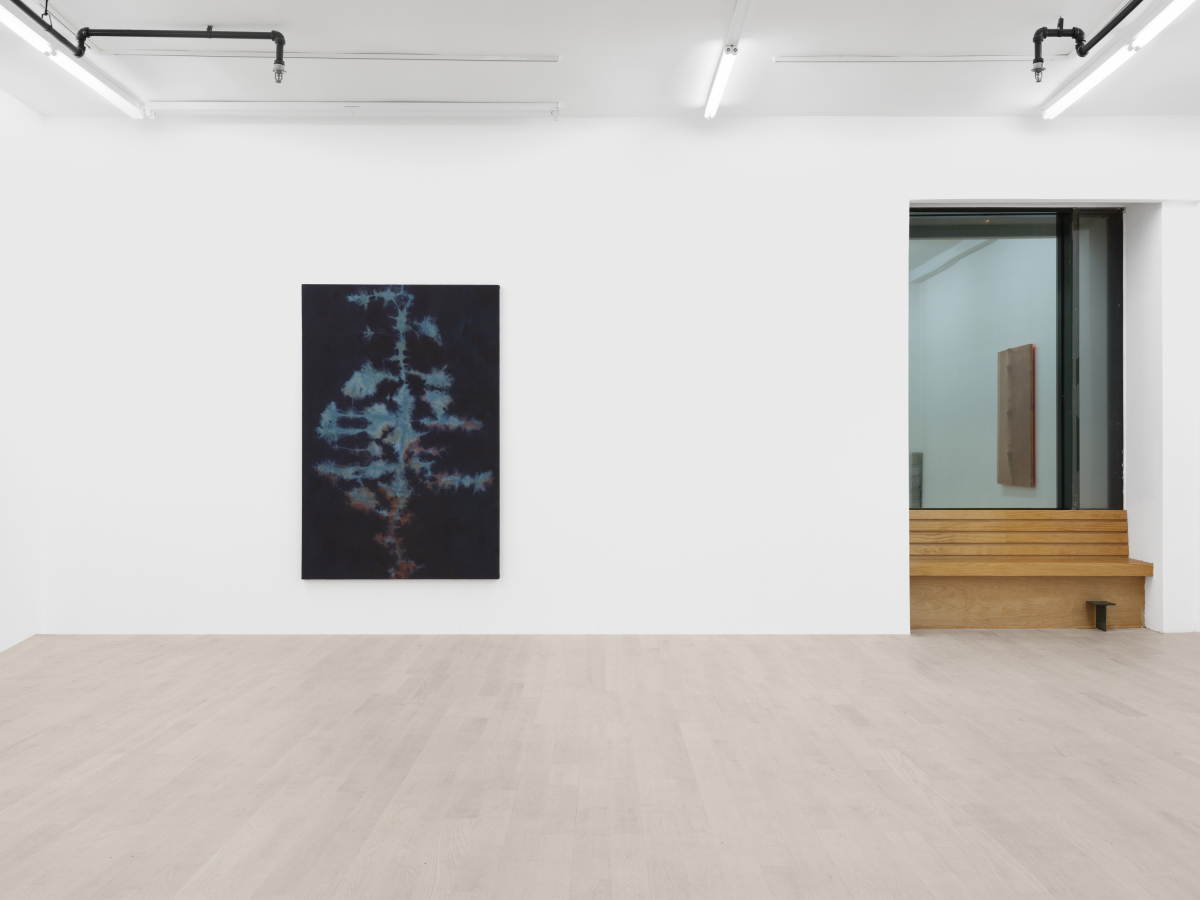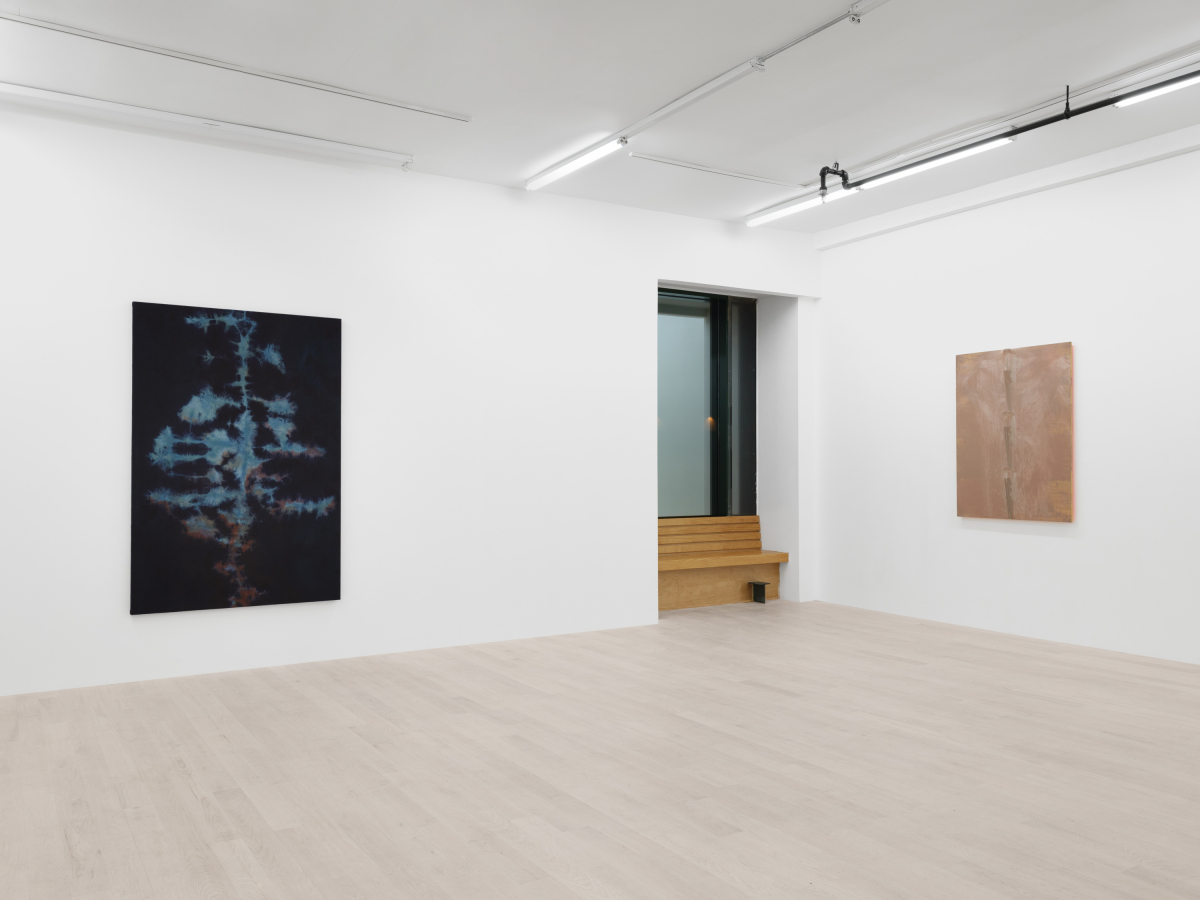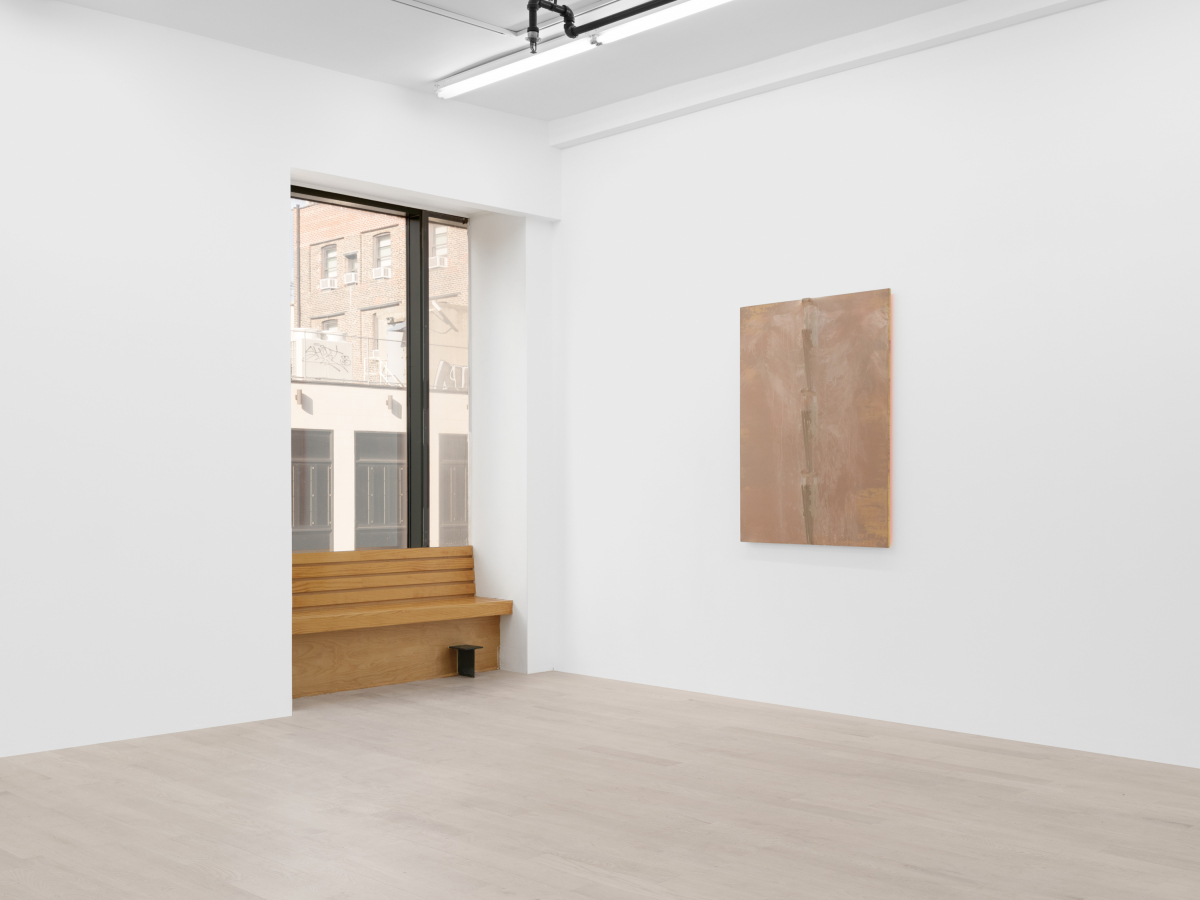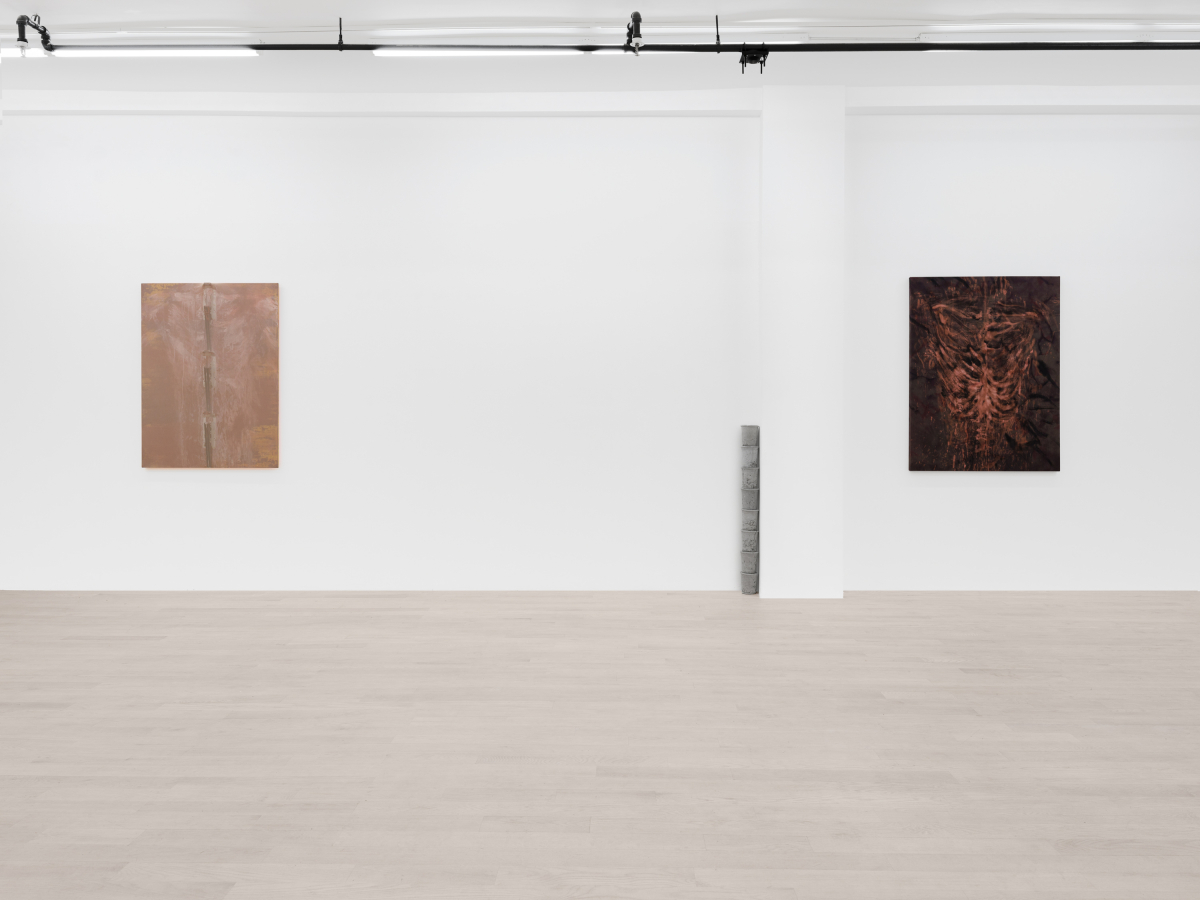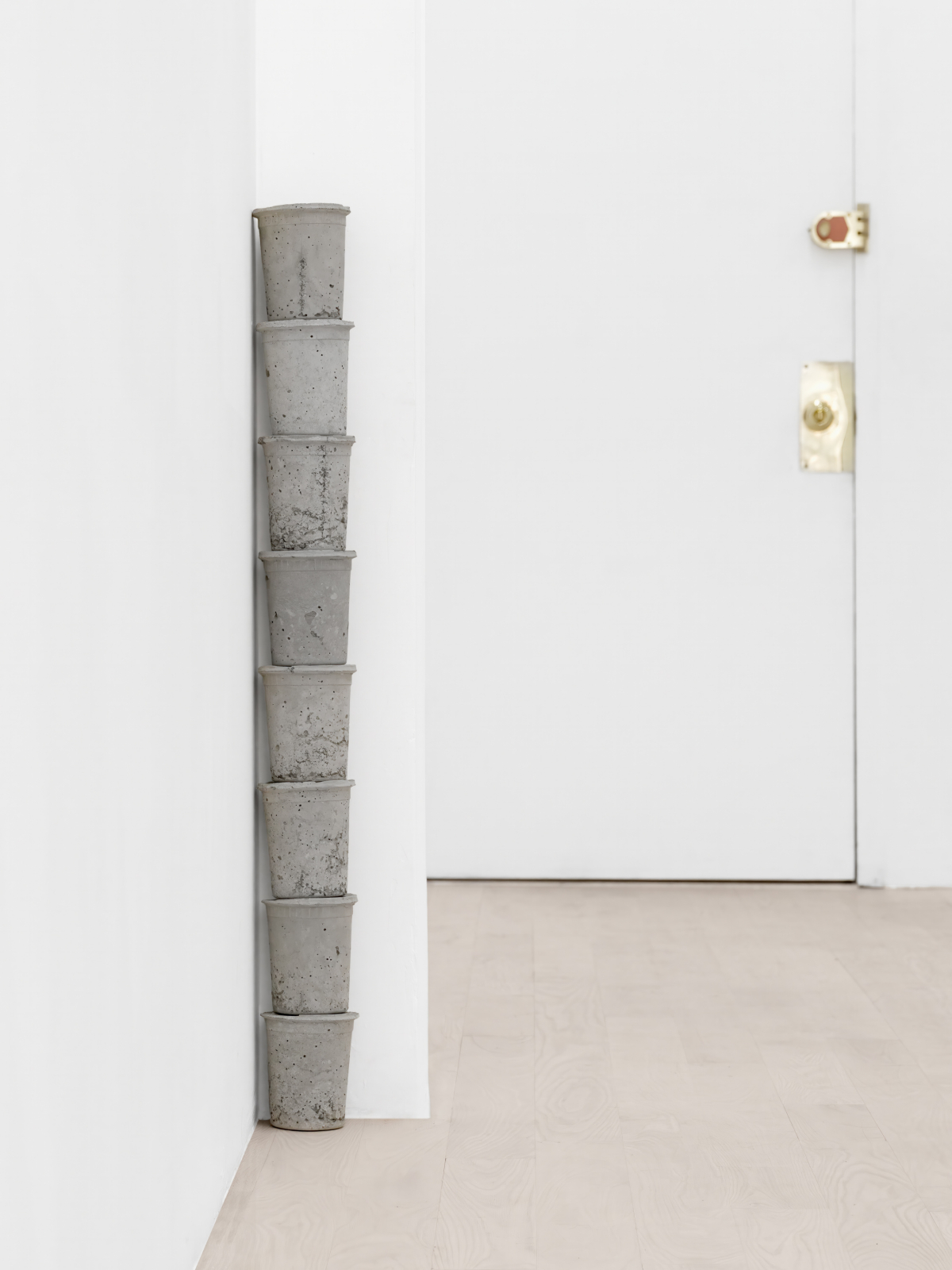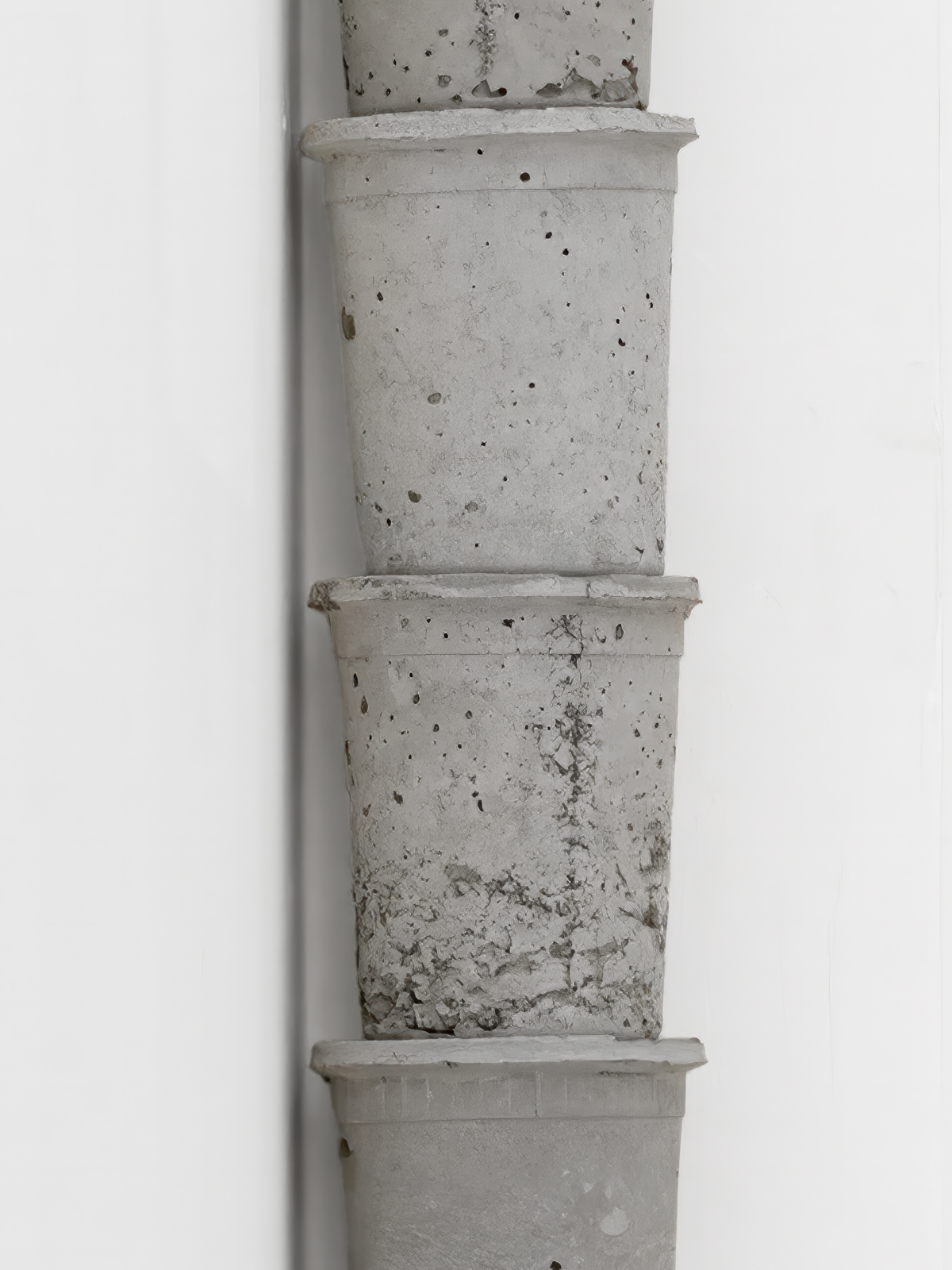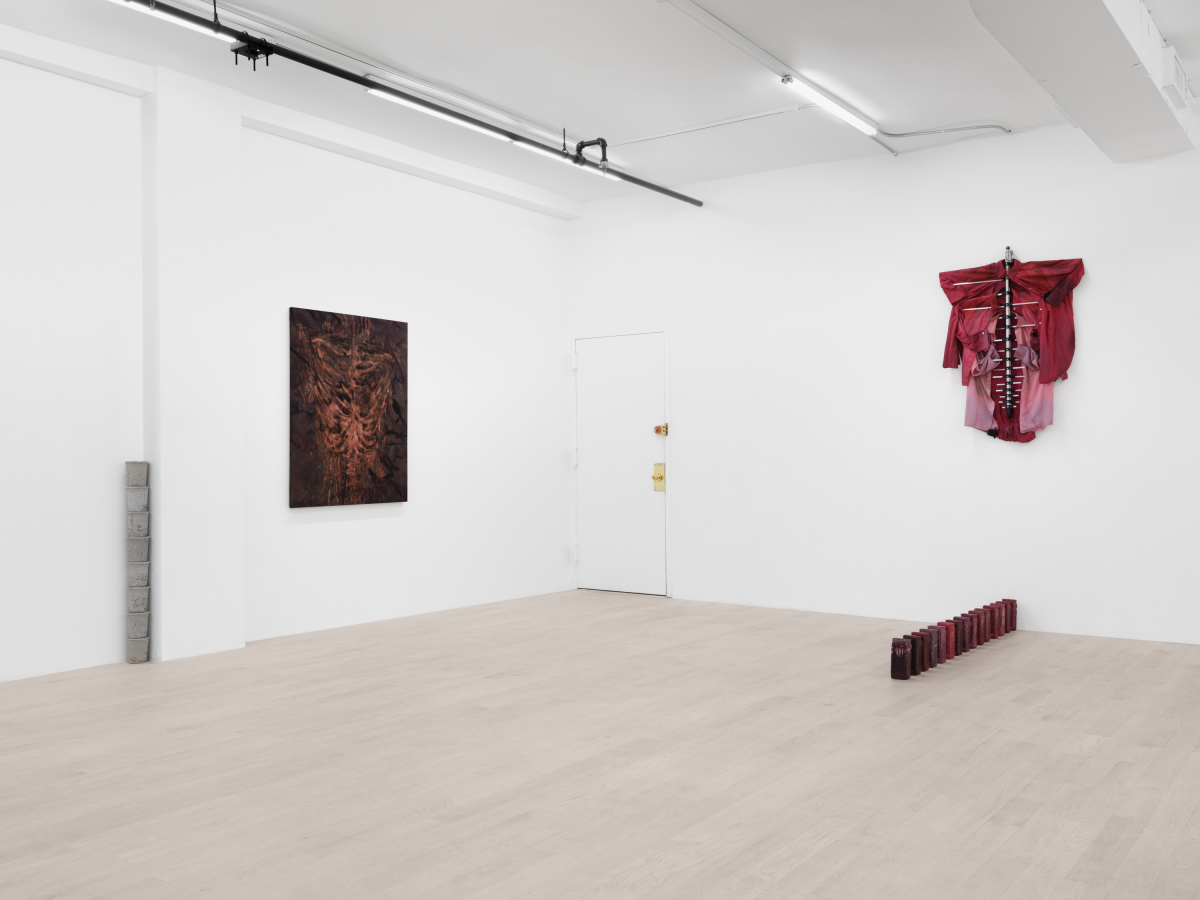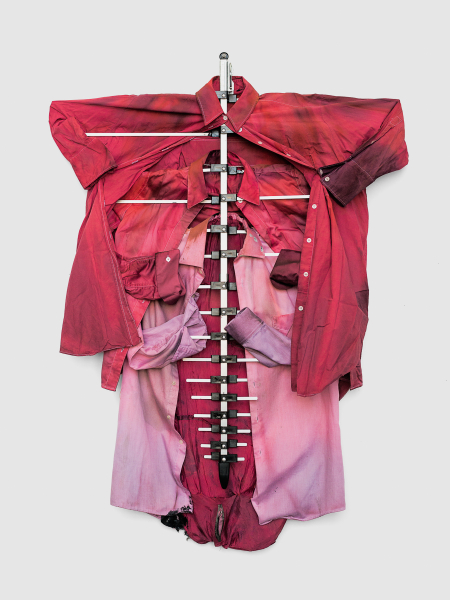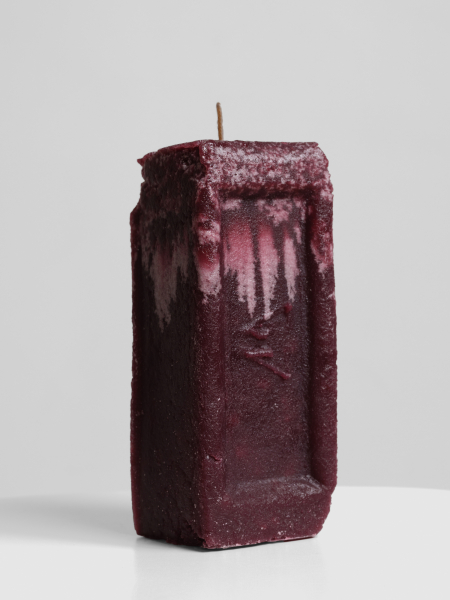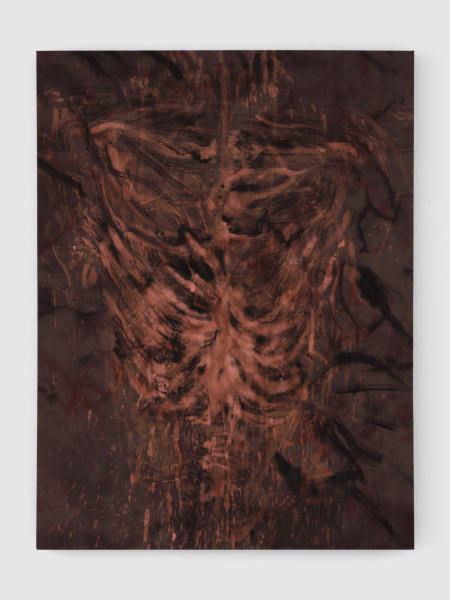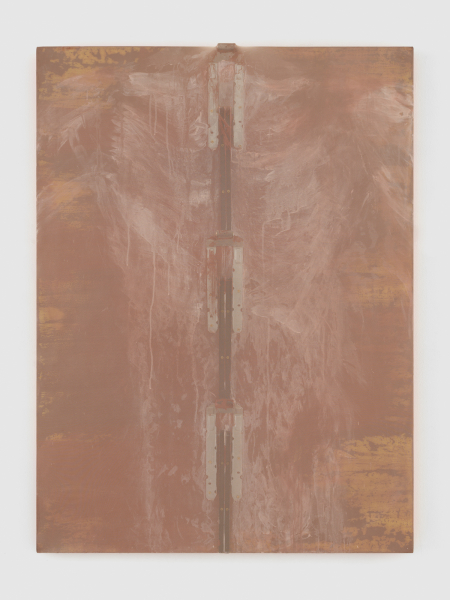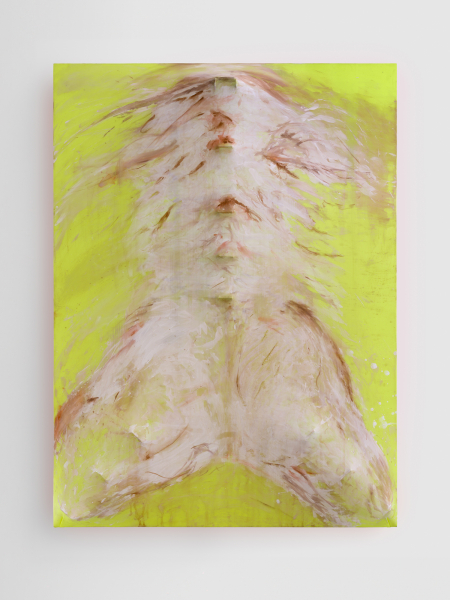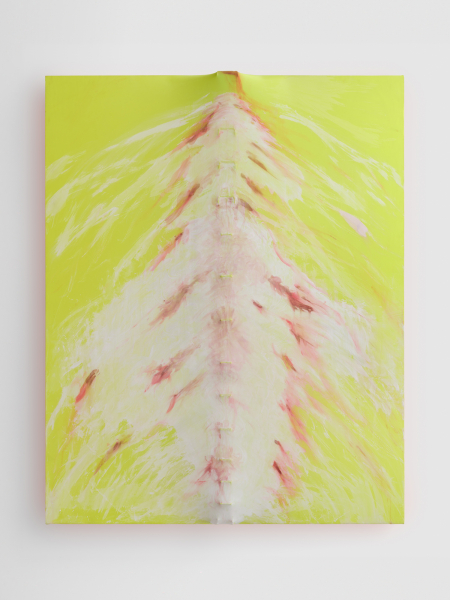Menu
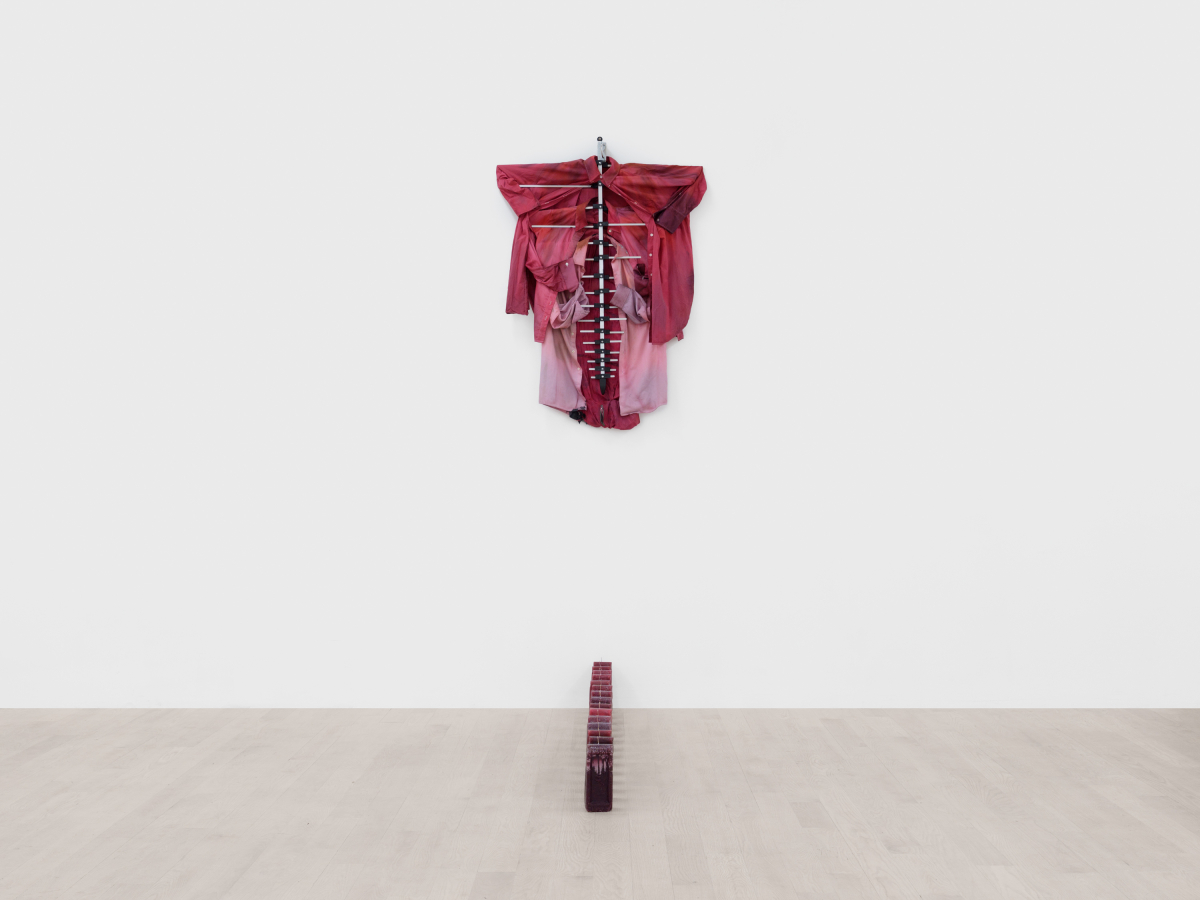
Eternal Rent, Installation View
Management is pleased to present Eternal Rent, New York artist Tahir Karmali’s debut New York solo exhibition. Charged with symbolism, Karmali's expansive material-oriented practice concentrates thematically on migration, landscape/geology, labor, and belonging. A text by Jesse Bandler Firestone accompanies the exhibition.
———
A city like a body, a bone like a brick, the psyche your sewer. Rent. It's happened, happening to you.
In Eternal Rent, Tahir Karmali explores similarities between psychological states of rupture and change with the perpetual construction and reconstruction of New York City to express the terror and wonder of transformation. Twisted my ankle at the gym. He sees himself reflected in the city —used, relied upon, integral, supportive, and ever-changing. Should I get high tonight? To Karmali, the water-stained facades of buildings resemble a leaking body, torn fabrics mirror a wound that needs healing, and scaffolding represents the ongoing vulnerability of being exposed. Can’t stop these stress dreams, damn Anton again. In this new series of works, Karmali incorporates elements of fashion, infrastructure, and references to organs, touching on themes of protection, exploitation, and the full spectrum of emotions within. Double jab, cross.
Making anything has become erotic to me. This exhibition marks a significant departure from Karmali’s previous work, which often involved detailed research and analysis of geopolitical forces and how they manifest in global consumption and production. In Eternal Rent, Karmali shifts his focus inward, tearing apart his practice—and himself—to embrace an exquisite pain through the cathartic release of art-making. 190 grams of protein.
The works featured in this exhibition include wall-mounted pieces, floor sculptures, and objects for the home, utilizing a wide range of materials including wax, metal, wood, fabric, concrete, glass, and cocaine. Wet socks on the subway. Eternal Rent captures Karmali’s versatility as a maker and his power as a conceptualist to imbue these materials with emotional resonance. Among the exhibited works, wax-cast bricks that bleed red when burned acknowledge precarity and exhaustion, while painted images of cracked sternums on high-visibility fabrics suggest a body in danger. Delivery, in the rain. Discarded and trashed deli containers, which Karmali has preserved and cast in glass and concrete, pay homage to the cogs in the machine. A large piece of denim, dyed, then stripped of color and brushed with cocaine, speaks to ideas of class, decadent waste, and oblivion. I’ve been hiding behind politics, materials and drugs.
Though anchored in an embrace of material presence, Eternal Rent must also be considered a rejection—a rejection of the perceived expectations placed upon an artist from the Global South, specifically Kenya. 186 grams of protein. Karmali has found deep inspiration in shedding these constraints, allowing him to present himself as he truly is: exposed yet resilient, flayed yet repairing. As if to say, the horrors persist, and so do I. Delivery. Again?
At its core, Eternal Rent is an invitation to feel more and think less - to bear witness to an artist in the process of self-affirmation and reclamation. To see what comes up when you put it all down. Rent. It's happened, happening to you.
— Jesse Bandler Firestone (with interjections by Tahir Karmali)
Karmali (b. 1987 in Nairobi, Kenya) holds a Master's in Photography from the School of Visual Arts, New York, and is based in Brooklyn. Solo exhibitions include Eternal Rent, Management, New York; Bound Between Cliffs, Circle Gallery, Nairobi; Paper Planes, Sotheby’s Institute, New York. Group exhibitions include Invocations, Circle Art Agency, Nairobi; Open Call, The Shed; Omniscient: Queer Documentation in an Image Culture, Leslie Lohman Museum; Second Careers, Cleveland Museum of Art; and Making Africa at High Museum of Art, Atlanta, Kunsthal Rotterdam, Blanton Museum, Houston, CCCB, Barcelona, Guggenheim Bilbao, and others. Karmali was awarded a Pollock-Krasner Foundation Grant and a Lower East Side Printshop Keyholder Residency. He was an artist in residence at The Watermill Center and Montello Foundation, Triangle Arts Association, Pioneer Works, Trestle Gallery, the MacDowell Colony, and BRIC.
